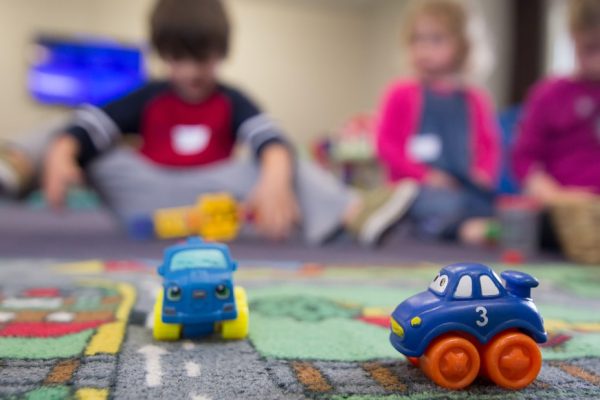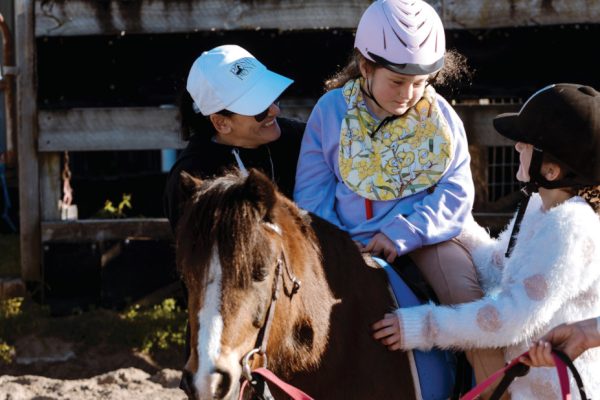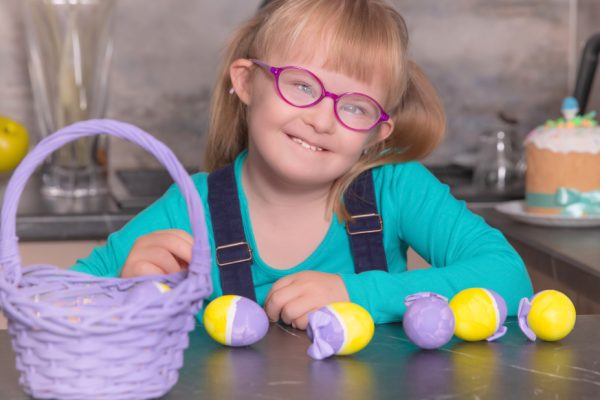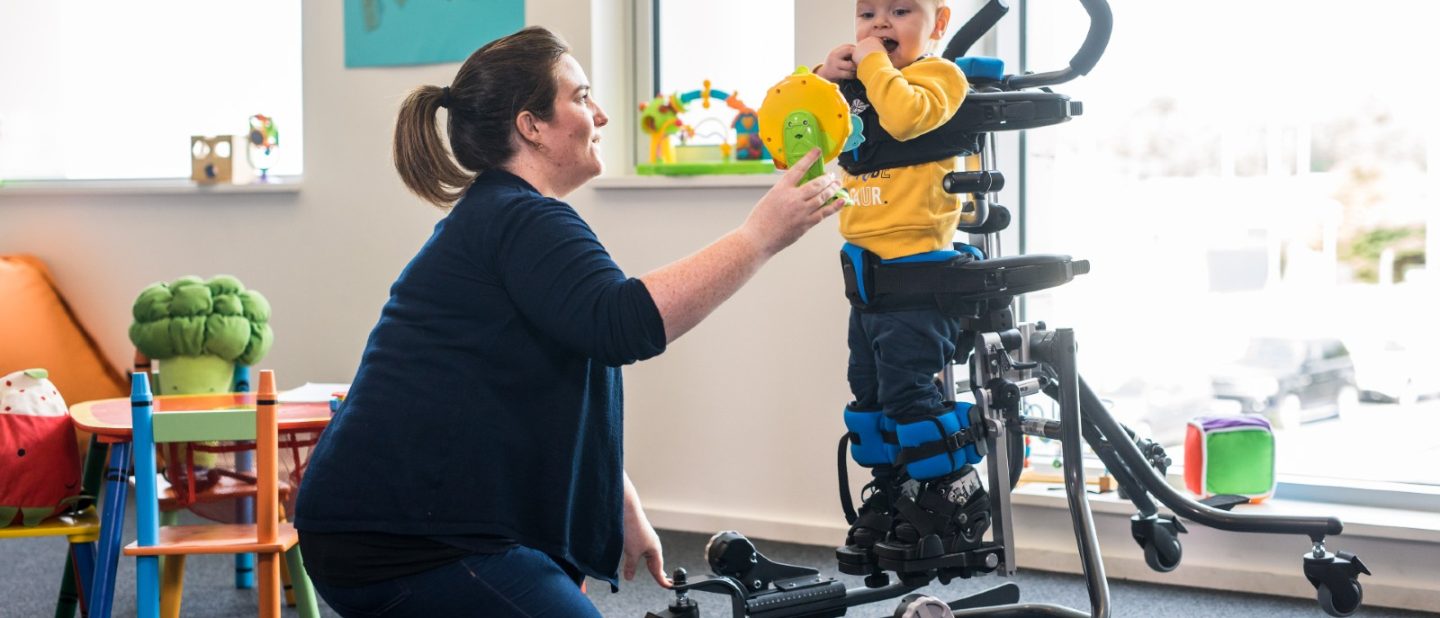
Paediatric standers: activities you can do at home

By Sunrise Medical
Standing is hugely beneficial for the body: from increasing bone mineral density to improving breathing and digestion. From offering pressure relief to providing a change of position or a stretch, there are numerous reasons to stand. While we know the many benefits related to children consistently utilising a standing frame as part of their daily routines, it’s likely children simply do not know or care about these benefits, however important they may be!
This resource aims to give some hints and tips on making standing time active and fun.
Active vs. Passive Standing
Passive standing simply refers to using a standing frame to be upright for gains to body structure like hip joint development. This can make standing time difficult to tolerate, restrictive, and simply quite boring. Active standing encourages a child-centric approach to standing time by making it meaningful and enjoyable, which can aid many areas of development. Simply put, fun standing = improved outcomes.
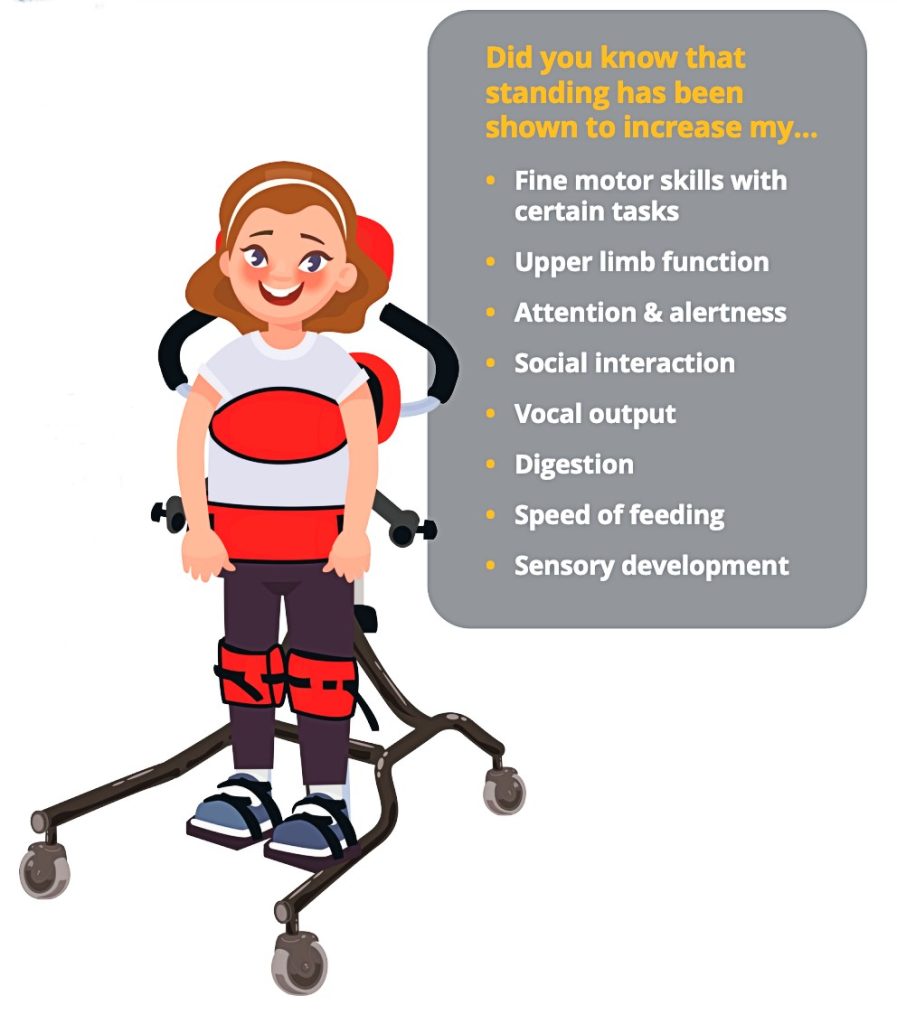
Stander Setup
Learning to be upright can be tough. Gravity works against the head and trunk, making it difficult to maintain an upright position, particularly for those with reduced strength or muscle control. Some standing frames can tilt backwards (supine) or forwards (prone) and can be easily adjusted depending on the needs of the child. Generally speaking, supine transfers are easier for lifting and suit more involved needs, while prone standers suit standing transfers and facilitate more active head and trunk control.
Gross motor games
Work on head control by positioning objects/sounds outside of the field of vision.
Reach out for objects like bubbles. Encourage the child to use both hands and cross their midline.
Learn to throw and catch. Soft spongy items can be easier to catch.
Fine motor activities:
From arts and crafts to homework, correct standing support can stabilise the shoulder and upper limb to help fine motor skills.
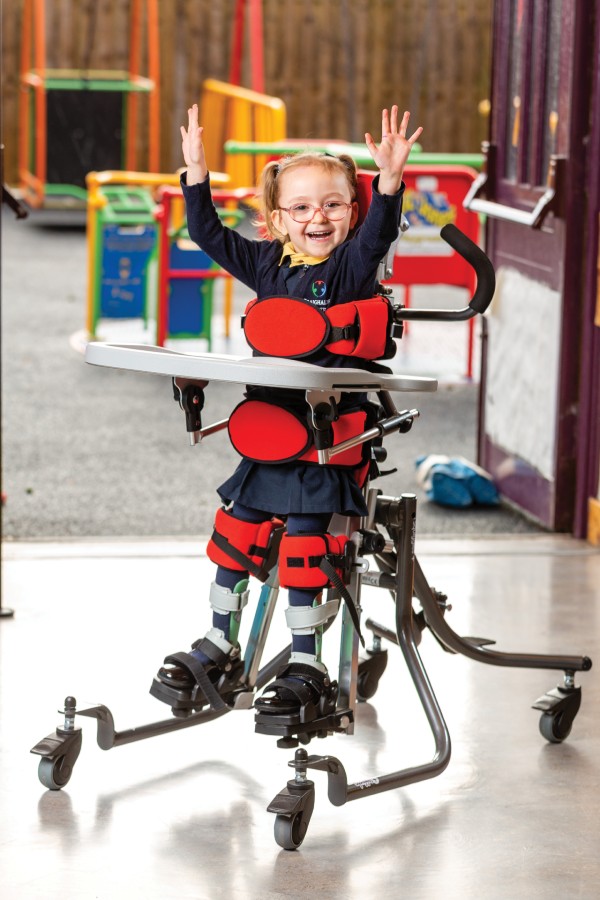

Sensory games:
Standing opens up a whole new world of sensory experiences for some children. See how you can introduce new experiences like playing in a water table, drawing
on an art easel, or exploring a play kitchen.
Singing:
Standing improves deep breathing ability, helping to speak and sing louder and longer.
Social games:
Role-play activities with siblings like playing shopkeeper. Practice naming and counting
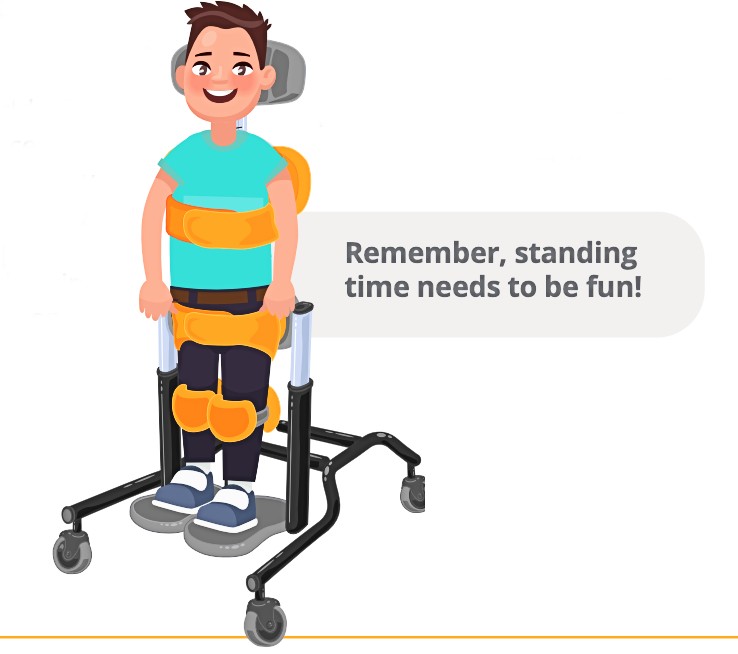

Created by Clinicians for Clinicians. Sunrise Medical Education in Motion provides the latest information in the complex rehabilitation technology industry. Read blogs, articles detailing clinical applications and outcomes.




